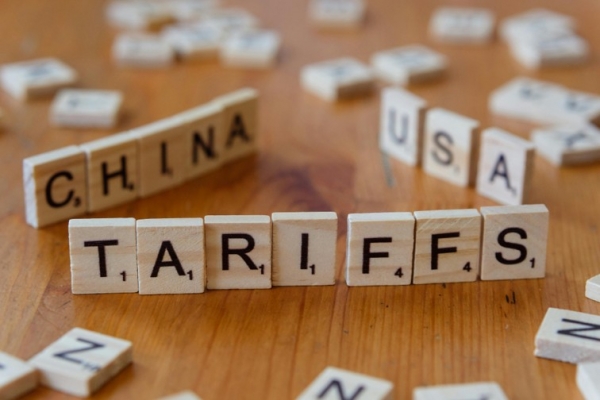For news coverage, please proceed to Activity page.
https://www.acccimserc.com/activities/activity-20250417
A. WORLD ECONOMIC OUTLOOK UPDATE
The Global Economic Path Ahead is "Rough and Foggy"
- A major global slowdown looms. High frequency indicators suggest that global growth continued in Q1 2025, albeit highly cautious about its near-term direction amid a looming risk of the Trump’s “Liberation Day” tariffs-induced full-blown trade war could push the global economy into a sharp downturn.
- Tariffs action and retaliation among major economies have fuelled concerns about a full-blown trade war uncertainty, causing extreme volatility and ripple effects on the financial markets worldwide, oil and commodities markets. Tariffs can severely disrupt global supply chains, increase cost of raw materials and push up consumer inflation, pushing the global economy toward stagflation (low growth and high inflation), and in the worst case, can cause a global recession.
- Upside risks to global expectations and monetary policy path. Since 2H 2024, major global central banks have lowered their policy rate amid moderating headline inflation. However, a combination of the US tariffs policy and retaliation actions could also pose upside risks to inflation expectations. Trade tensions, supply chain disruptions, and increased inputs cost may affect consumer prices (due to cost pass-through) not only through the direct effect of increases in import prices, but also indirectly due to increases in the prices of domestically produced goods triggered by higher input costs.
- Rising inflation expectations, slowing economic growth and a rise in unemployment would force the Fed to choose between fighting inflation and maintaining a steady labour market. Even though the Fed signalled that it would cut rates twice this year, the Fed Chairman warned that tariff inflation could be more persistent. This could limit the central bank from cutting the rate faster and more, even if the economic growth slows.
B. MALAYSIA ECONOMIC OUTLOOK UPDATE
Navigating Tariffs Tension-Induced Disruption on Malaysia
- A commendable economic performance in 2024. Malaysia is in a position of strength to face the impact of tariffs, which is expected to widen globally due to Trump’s Liberation Day tariffs on all countries, with China hitting the hardest.
- Positive momentum continues in 2025. Bank Negara Malaysia (BNM) has maintained positive economic assessment with GDP growth sustaining at 4.5%-5.5% in 2025. Sustained domestic demand, investment upcycle, and export recovery will be the key drivers. However, the unprecedented tariffs announcement dubbed as Trump’s “Liberation Day” on 2 April has escalated the Trump “Make America Great Again (MAGA)” into a full-blown trade war, with far-reaching implications on global trade flows, economic growth, and global supply chains. Despite a 90-day pause on country-specific tariffs, broad tariff measures, especially the tit-for-tat tariffs of China and the US, would strain global trade and economic growth.
- Risks to inflation are tilted to the upside. Headline inflation stood at 1.5% in February 2025 (1.7% in January), with most categories showing stable prices trend. Core inflation edged up to 1.9% (1.8% in January).
Decoding Trump’s “Armageddon” Tariffs: What’s the economic impact on Malaysia?
- Tariffs action and retaliation among major economies have fuelled concerns about a full-blown trade war uncertainty, putting the world stock markets on the edge of extreme volatility. It can severely disrupt global supply chains, increase cost of raw materials and push up consumer inflation, pushing the global economy toward stagflation (low growth and high inflation), and in the worst case, can cause a global recession.
- Though Malaysia’s average Most-Favoured-Nation (MFN) applied tariff rate was 5.6%; 7.4% for agricultural products and 5.3% for non-agricultural products in 2023, the United States Trade Representative (USTR) has derived that Malaysia is currently applying an average of 47% tariff (includes currency manipulation and trade barriers) on the US goods to Malaysia. This raises eyebrows on the basis of the calculation, and the formula is fundamentally flawed.
- How’s the impact on Malaysia? Malaysia’s external sector will face a daunting challenge ahead given the disruptive impact of the tariffs on supply chains, global demand, and business operational costs.
- We draw comfort that the US authorities said that tariffs can be lowered if any trading partner takes significant steps to remedy the non-reciprocal trade arrangements and align sufficiently with the US on economic and national security matters. Trump said he would be open to negotiating with other countries about the duties.
- We welcome the Ministry of Investment, Trade and Industry (MITI)’s stance of not considering retaliatory tariffs, instead will actively engage with the US authorities in addressing the impact of reciprocal tariff.
- Pencilling the tariffs shock in this prevailing moderate global growth and heightened global uncertainty, we have revised our 2025’s GDP growth estimate to 4.0% from 5.0% previously to reflect the impact of tariffs on exports and its spillover effect on domestic consumption and investment.
- We expect Bank Negara Malaysia will wait to assess the impact of tariffs on economic growth before making any policy decisions, potentially including interest rate adjustments if domestic growth is under threat to below 4% and domestic demand falters.







